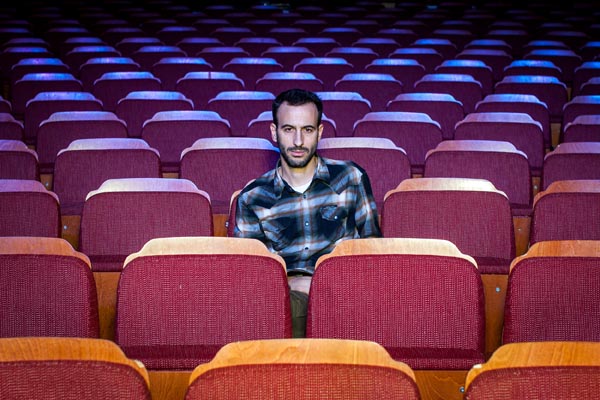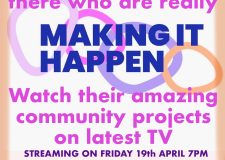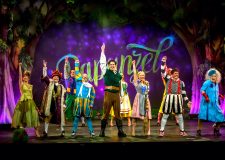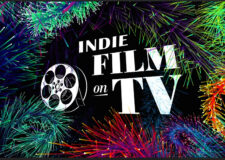Stage: Hofesh Shechter

As Brighton Festival 2014 prepares to start Andrew Kay talks to this year’s guest curator
How were you approached to actually be the festival curator?
I was approached by Andrew Comben quite a while ago, a Saturday in Brighton, nothing unusual, being the resident company it didn’t feel completely out of the blue, but it did feel exciting. Andrew ran the idea by me, asked how would I feel about it and I said “Yeah, sounds great!”
You join a line of very prestigious creatives in the past.
Yes, but my first thought was ‘I am going to get to see the Festival from start to end’ and that’s exciting. My company has performed in the festival for years, and you want to experience the whole festival, and to be able to create it is fun, exciting, really challenging. It was a no brainer for me, to take me out of my normal choreographer’s life.
You are far more than just a choreographer, you produce your own music, and work very closely with the visuals, the lighting…
Yes, I see myself as creating an experience for people, and creating a sort of journey that lasts 60 or 70 minutes and offers an experience that is hopefully intriguing, emotional, and gives perspective and insight into life. It’s kind of an arch, an atmosphere that goes through the works. Curating the festival is like creating an experience over three weeks, and using other people’s art which is always easier.
As an audience member your work is very intense, not something you can coast through. It’s quite confrontational, is it intentionally personal too?
It depends which one, some are more evidently personal, but it is all personal. I take everything personally, and I think my works are a sort of frame of my thoughts in time. It’s like people watching me thinking, analysing myself, where I am at with the world, where the world is at through my eyes. My work is a presentation of how I feel about either myself or the world, with the hope that other people are sharing these kinds of feelings themselves. I try to make work from a place where I care about the work, where I feel strong things, where I deal with things that really bother me. In that sense, perhaps there is something very emotional, very childish even, very honest about the work.
This year’s theme is about concepts of migration, immigration, and the displacement of nations.
We started with which work would be interesting and what attracted me, interests me, and identified this theme through the work. It was the idea of one person out of place, questioning himself, questioning the place.
As well as a geographical displacement, would that be a spiritual displacement?
Absolutely, absolutely!
You grew up in the Middle East, did you feel like you were in a place where you were not welcome.
I suppose. I realise that this is a feeling that many people share, regardless of where they are from. But I always felt a little bit different. This may be something that children feel, about how social structures around you are a source of conflict, evident like a live fire. I immediately questioned the way society is structured, the separation between people, the idea of control, the idea of freedom, all of these were high on the agenda of questions I was asking as a child, which made their way into my work. I think these themes are hot in Israel, but they are alive everywhere. It’s the complexity of how we form
our world.
How did you come to dance?
As a young child, I knew nothing about dance. I knew that it existed but I didn’t know what was contemporary dance. In school, we had folk dance classes, this is something everybody does in Israel, and through that I ended up in a folk dancing youth company when I was 12, and there I met people that were going to the Academy of Dance in Jerusalem. At 15 I decided to attend the Academy, I fell in love with the idea of physical expression, the sort of tribal, social thing that was dancing together, working together.
I think a strength of your work is that it is very much ensemble work
Very much. I think any artwork is a question mark, questions rather than making statements. That conflict that I have with social dancing, extremely exciting, extremely powerful, extremely primitive. This is a form that can be used and abused. I think that social dancing can be truly joyful on the one hand, and can be completely agendified. It’s a way of manipulating. I love this feeling , I don’t know if it’s a horrible thing or a great thing, how excited we can get as a group, as a tribe.
You use shapes and you use forms, that I feel are based on folk forms in your choreography.
Part of the language I speak in movement, it is embedded in me, and part of the vocabulary I use.
In previous works there are intense moments of shocking visual impact. Do you like to do that?
I think it’s important that the work moves people. That people come out of seeing the work and feel a little bit different, sometimes that can be through beauty and sometimes through shock. I enjoy it, but it’s not like a sadistic thing. If I feel shock, I enjoy finding ways of sharing it, there’s something extremely powerful about a thousand people experiencing an emotion together, beauty or shock, or pain or anger.
Does a work like that develop as you tour it?
Every work I make I feel differently about when it’s done. With Political Mother, it really captured a moment in time for me. With Sun, I made myself a promise as I was making it, that I would never finish.
For full details of Brighton Festival events go to brightonfestival.org




















